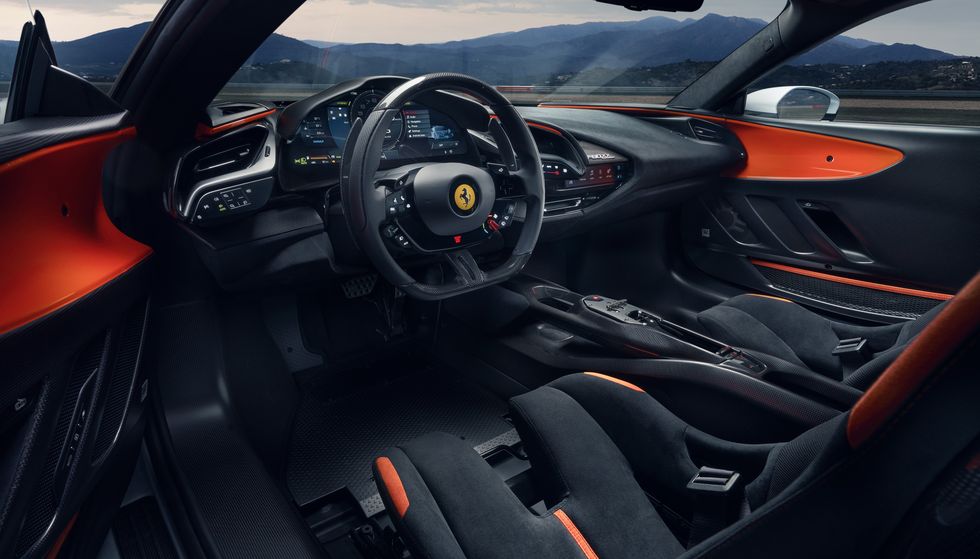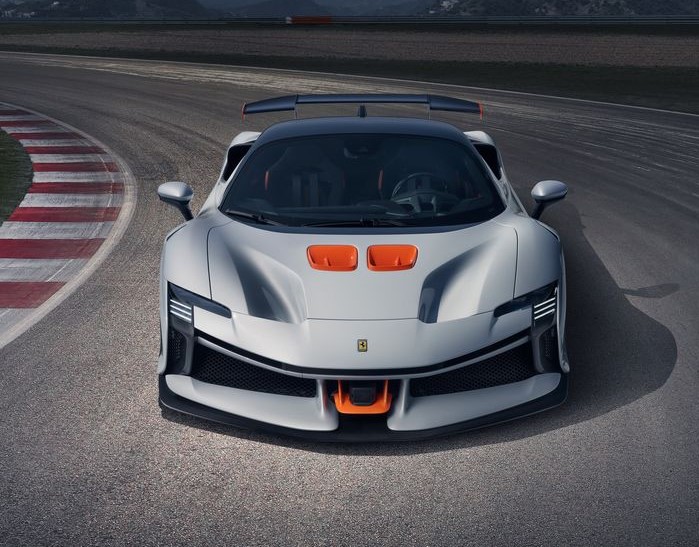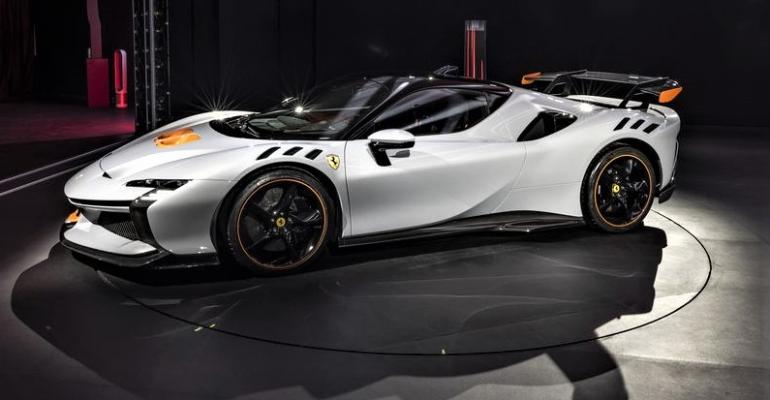Ferrari unveils its 1,006-hp SF90 XX, a car its development boss, Gianmaria Fulgenzi, describes as one of the Italian automaker’s most extreme road cars yet.
To be produced in both Stradale (coupe) and Spider (convertible) body styles, the new model draws heavily on the standard SF90 but with a host of performance upgrades in line with Ferrari’s previous XX-badged models, all of which were produced for track use only.
Power comes from a reworked version of the standard SF90’s gasoline-electric plug-in hybrid powertrain, developing an additional 30 hp, some 17 hp of which comes from the internal-combustion engine and 13 hp from the electric motors.
Consisting of a mid-mounted, twin-turbocharged 4.0L gasoline V-8 and a trio of electric motors – two on the front axle and one housed within the gearbox – it develops 1,006 hp and 592 lb.-ft. (803 Nm) of torque, making the SF90 XX the most powerful road car Ferrari has ever offered.

Changes to the ICE include new pistons, a specially machined combustion chamber and polished inlet and exhaust ducts. Ferrari has also modified the intake plenum to be closer to the cabin in a move, it claims, intensifies the exhaust note.
Power is sent to all four wheels via an 8-speed dual-clutch gearbox and direct drive from the electric motors.
Ferrari claims a 0-62 mph (100 km/h) time of 2.3 seconds and 199-mph (320-km/h) top speed for both the SF90 XX Stradale and Spider.
The battery capacity remains the same as the standard SF90 at 7.9 kWh, providing the SF90 XX with the same electric range of 15.5 miles (25 km). Top speed in electric mode is unchanged at 84 mph (135 km/h).
The electric motors receive a new “extra boost” function that Ferrari says has been derived from the system originally developed for its F1 race cars, providing maximum output for short bursts of acceleration.
With a fully charged battery, Ferrari says the “extra boost” function can be triggered up to 30 times.
Stylistic changes include a larger front splitter as well as altered air ducts within the hood – both aiding air flow and cooling. New air vents within the top of each of the front fenders reduce air pressure within the wheelhouses at speed.
The rear end (pictured, below) adopts new cooling vents within the roof as well as air vents within the top of the rear fenders.

The SF90 XX also features a fixed rear spoiler, the first since the F50 in 1995. It forms part of a race-grade aerodynamics package that is claimed to generate up to 99 lbs. (45 kg) more downforce than the standard SF90 at a speed of 155 mph (250 km/h).
Additional changes include stiffer springs and a lowered ride height, which Ferrari says reduces the body roll rate by up to 10%.
Redesigned front brakes and larger rear discs work with the ABS-Evo system that made its debut on the Ferrari 296 GTB to improve stopping power: The SF90 XX decelerates from 62-0 mph in 95.8 ft. (30 m), claims Ferrari.
“All the technical features we normally use for a XX car” were integrated into the PHEV flagship, says Ferrari’s marketing and commercial boss, Enrico Galliera.
Included are the lightest seats ever fitted to a road-going Ferrari, contributing to a curb weight of 3,439 lbs. (1,560 kg) for the SF90 XX Stradale and 3,660 lbs. (1,660 kg) for the SF90 XX Spider.
Ferrari has priced the SF90 XX Stradale at €770,000 ($842,000) and the SF90 XX Spider at €850,000 ($930,000). All 1,398 examples of the new Ferrari model (799 Stradales and 599 Spiders) are already spoken for, having been sold to what company officials describe as “loyal Ferrari clients.”






